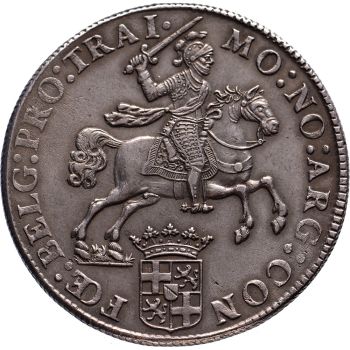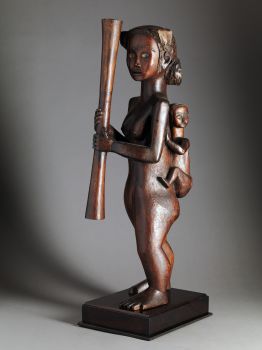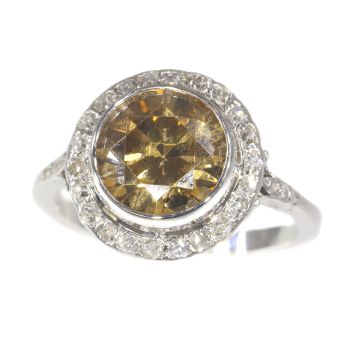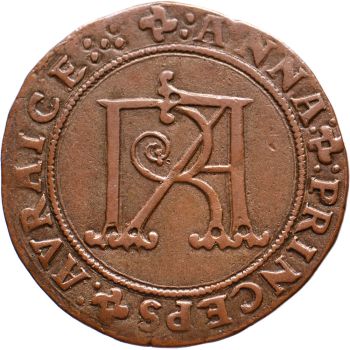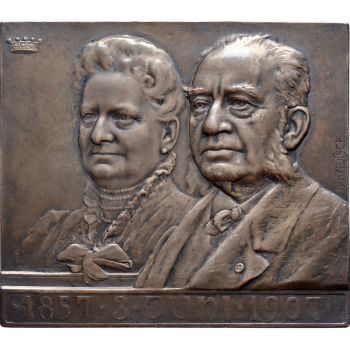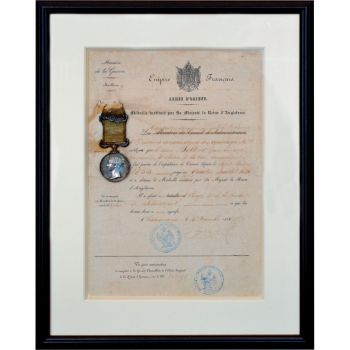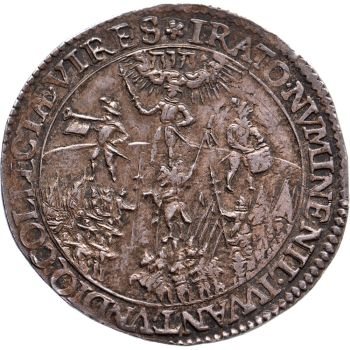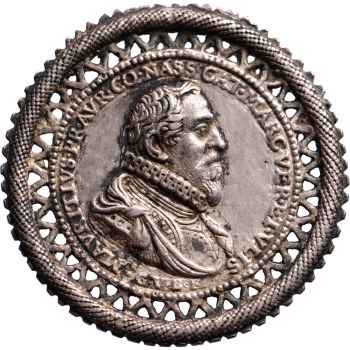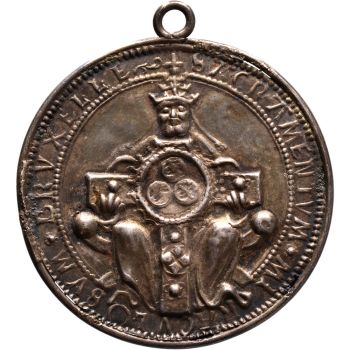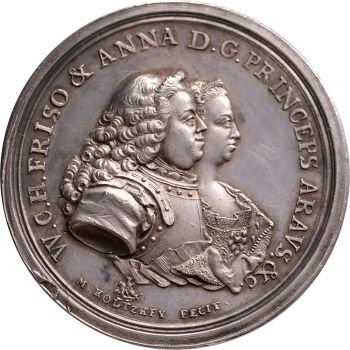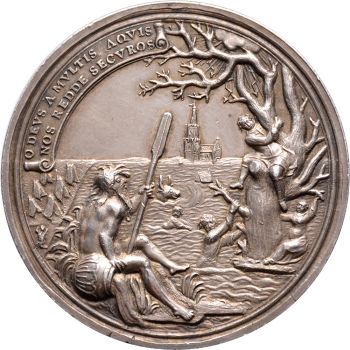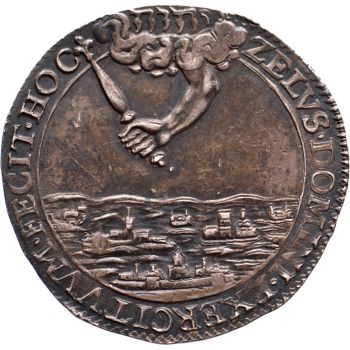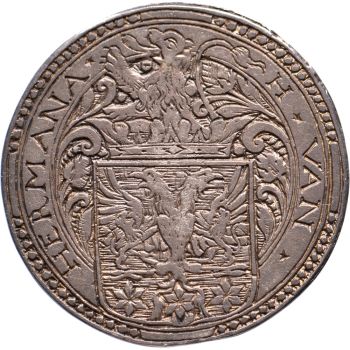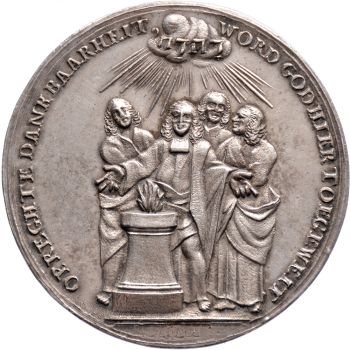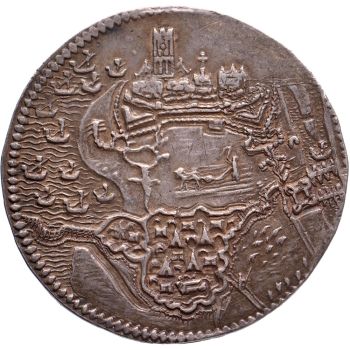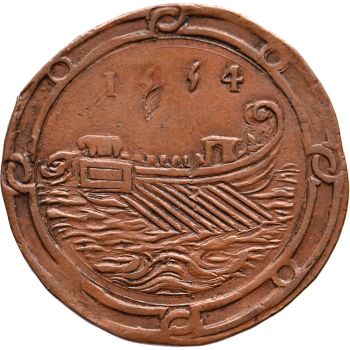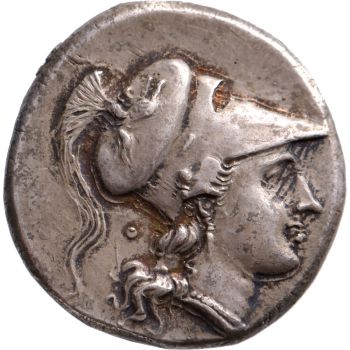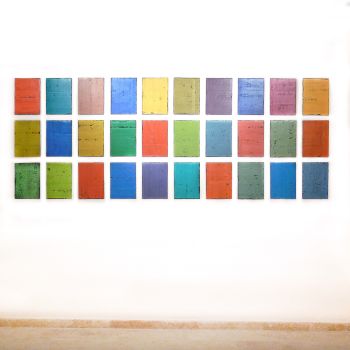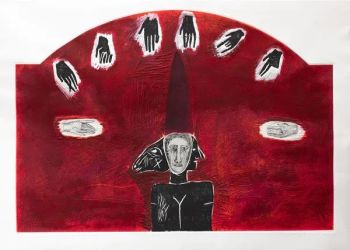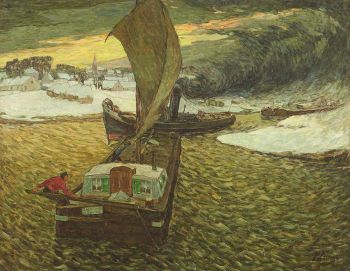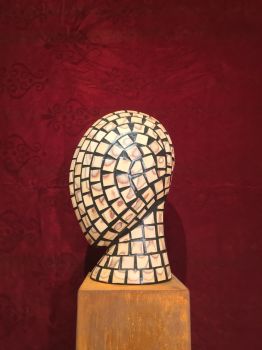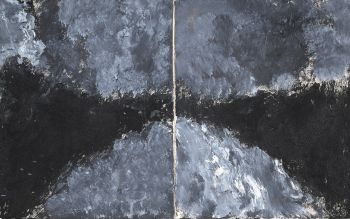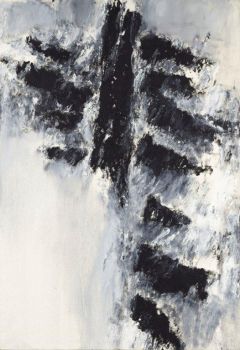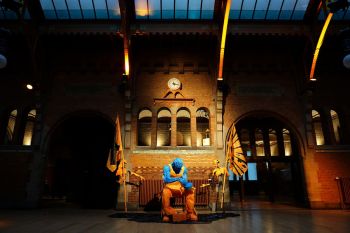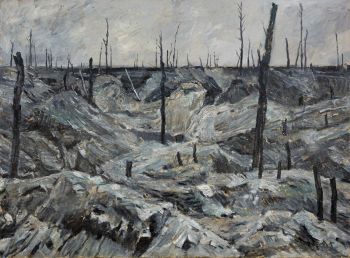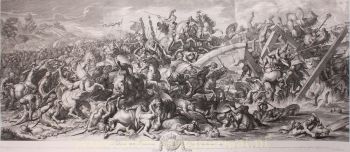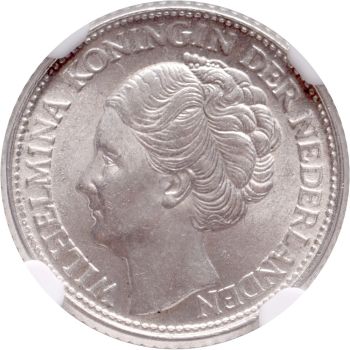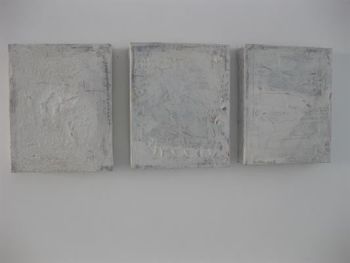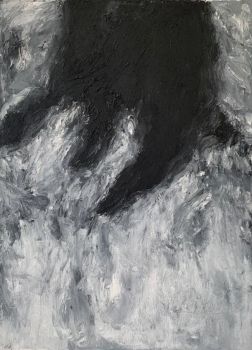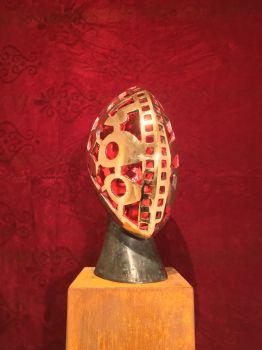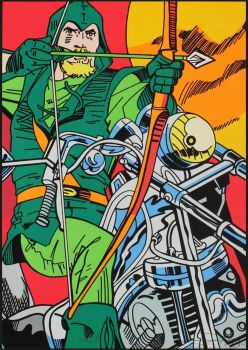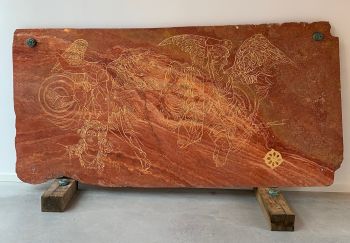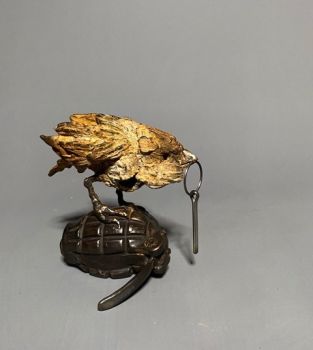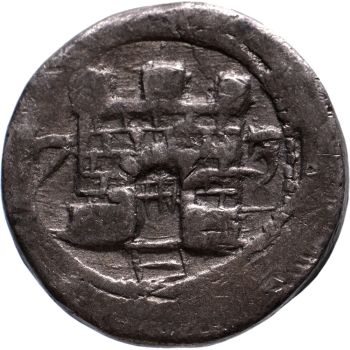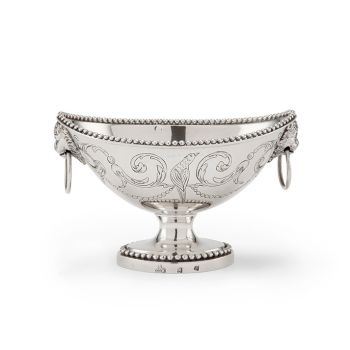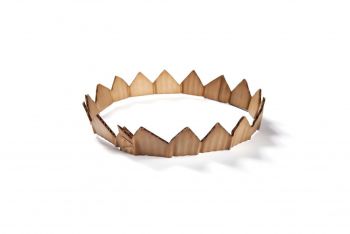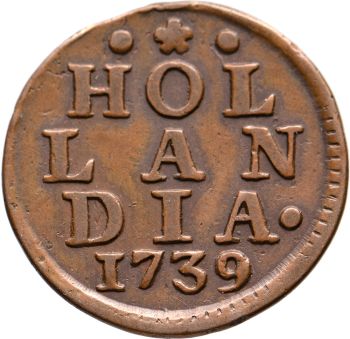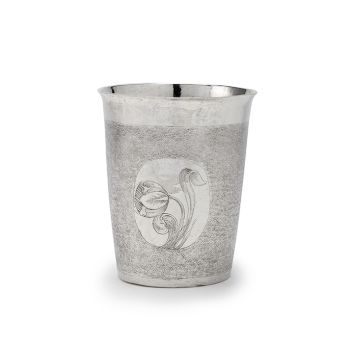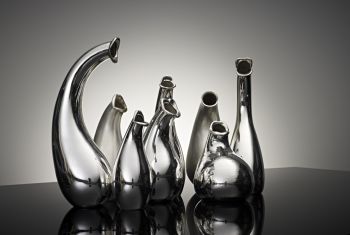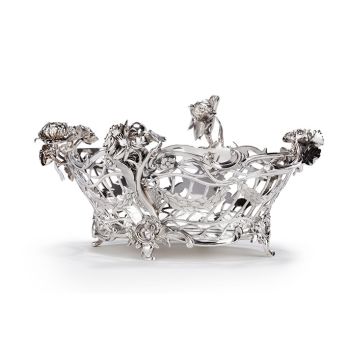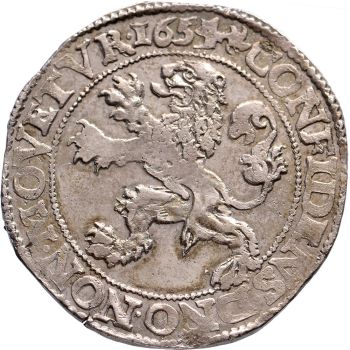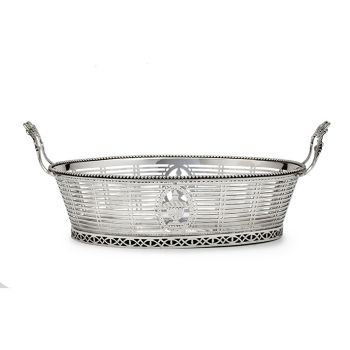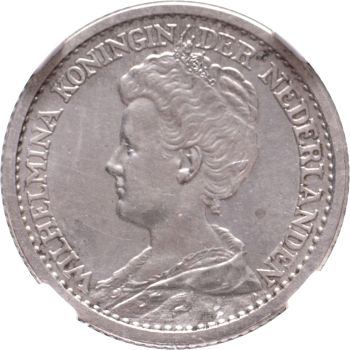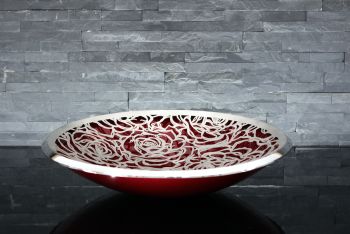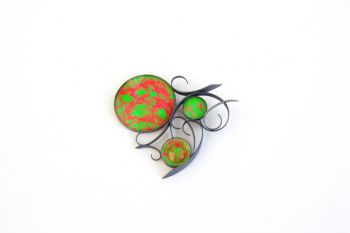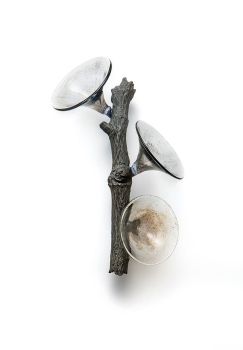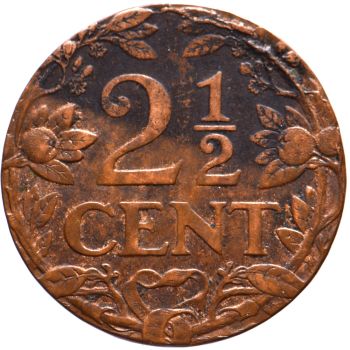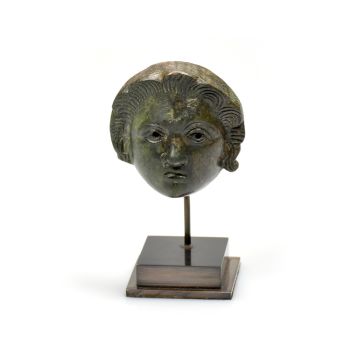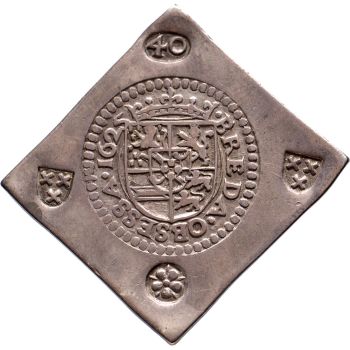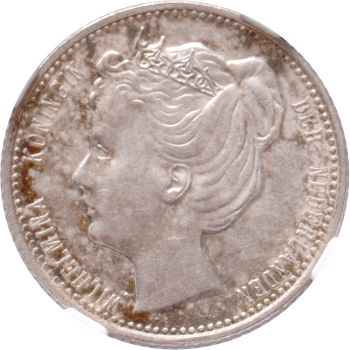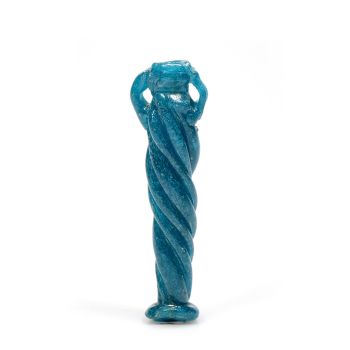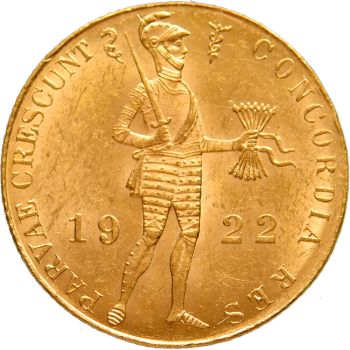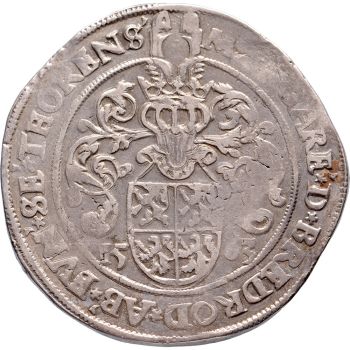Victory over the Spanish fleet at Zeeland / Battle on the Slaak 1631
Artista Desconocido
Plata
€ 6.500
Jongeling Numismatics & Ancient Art
- Sobre la obra de arteObverse: Verè surrexit De9 / et dissipati sunt / Inimici ei9 [GOD HAS STOOD UP AND HIS ENEMIES HAVE BEEN DISSIPATED], view of West Brabant and the Zeeland islands, ships
Reverse: D. O. M. / Hisp. classem ausp. / Ord. Belgij, Ductu Fr. Hen. / Pr. Aur. sub legato suo in Zeel. / Hollario dissipavit intra Vianen / & Stavenisse, expòst nebulâ circum / susam, vadisque allisam, in manus / suorum omnes dedit, aut perdidit, / solo Prœfecto Com. Ioh. de Nassau / socijsque. x. exeptis, LXXVI navi / bus, & MMMMCXL militibus / captis, perque castra Principis / Bergam ad Zomam gregatim / deductis. XIII September / Anno – 1631. [THE BEST AND GREATEST GOD. UNDER THE RULE OF THE STATES GENERAL AND THE COMMAND OF FREDERICK HENRY PRINCE OF ORANGE AND HIS LIEUTENANT HOLLAAR, THE FLEET OF THE ENEMY HAS BEEN DESTROYED BETWEEN VIANEN AND STAVENISSE, AND HAVING STRANDED AND BURNED THE VESSELS, ALL THEIR CREW HAVE BEEN TAKEN PRISONER EXCEPT THE SUPREME COMMANDER JOHN OF NASSAU AND TEN OF HIS STAFF, WITH 76 VESSELS CAPTURED, 4,140 SOLDIERS TAKEN PRISONER AND BROUGHT TOGETHER TO BERGEN OP ZOOM ON SEPTEMBER 13TH, 1631]
By Johannes Looff
VERY RARE
Joost van den Vondel (1587-1679) wrote a poem about this sea battle entitled “Triomforts over the Neêrlaegh der Koninglyke Vlote op het Slaak”.
The Battle of the Slaak in 1631 was an encounter between a Dutch fleet and a Spanish fleet during the Eighty Years' War between the Netherlands and Spain. In an attempt to separate Zeeland from Holland, the Spanish fleet of 124 ships planned to capture the Ooltgensplaat. In response, Prince Frederik Hendrik ordered to gather all the warships that the admiralties of Holland and Zeeland could supply at that time: 50.
On the evening of September 12, the Dutch fleet threatened to overtake the Spaniards near Sint Philipsland, forcing them to enter the Slaak, a narrow channel influenced by the tide. The Dutch fleet then attacked. As a result of the unexpected attack, the unfamiliarity with the terrain and the rising fog, confusion arose among the Spanish troops, followed by general panic. Dozens of Spaniards jumped into the water to reach the mainland via the mudflats at De Heen and Vossemeer in the hope of not falling into Zeeland hands. However, they were met there by Dutch soldiers, often stationed in one of the forts of the Line of Unity. For example, more than 4,000 men were taken prisoner by Frederik Hendrik's army and deported to Reimerswaal. The Spanish naval force was devastatingly defeated. Only eight Spanish ships reached Dinteloord, meaning the Spanish had to abandon the original plan. The other ships had been sunk or boarded.
Weight: 39.75 g
Diameter: AR 55.0 mm
Grade: Extremely Fine
Mint: Middelburg
Reference: VL. II, 197.5; Vanhoudt 1631.7 - Sobre el artista
Puede suceder que un artista o creador sea desconocido.
Algunas obras no deben determinarse por quién está hecho o por (un grupo de) artesanos. Algunos ejemplos son estatuas de la Antigüedad, muebles, espejos o firmas que no son claras o legibles, pero también algunas obras no están firmadas en absoluto.
También puedes encontrar la siguiente descripción:
•"Atribuido a …." En su opinión, probablemente una obra del artista, al menos en parte.
•“Estudio de….” o “Taller de” En su opinión, una obra ejecutada en el estudio o taller del artista, posiblemente bajo su supervisión
•“Círculo de…” En su opinión, una obra del período del artista que muestra su influencia, estrechamente asociado con el artista pero no necesariamente su alumno.
•"Estilo de …." o “Seguidor de…”. En su opinión, una obra ejecutada al estilo del artista pero no necesariamente por un alumno; puede ser contemporáneo o casi contemporáneo
•"Manera de …." En su opinión una obra al estilo del artista pero de fecha posterior
•"Después …." En su opinión, una copia (de cualquier fecha) de una obra del artista
•“Firmado…”, “Fechado…” o “Inscrito” En su opinión, la obra ha sido firmada/fechada/inscrita por el artista. La adición de un signo de interrogación indica un elemento de duda.
•“Con firma…”, “Con fecha…”, “Con inscripción…” o “Lleva firma/fecha/inscripción” en su opinión la firma/fecha/inscripción ha sido añadida por alguien que no es el artista
¿Está interesado en comprar esta obra de arte?
Artwork details
Related artworks
Artista Desconocido
Anillo belle epoque toi et moi1900
Precio a consultarAns Hemke-Kuilboer Juwelier & Antiquair
1 - 4 / 12Samuel Dejong
Anatomia Blue Heritage, Hercules Open2017 - 2019
Precio a consultarVilla del Arte Galleries
 curada por
curada porGallerease Magazine
1 - 4 / 24- 1 - 4 / 22
Jan Cornelis van Hemert
Canasta de dulces de plata holandesa1799
Precio a consultarJacob J. Roosjen SRI
Artista Desconocido
Vaso de precipitados de plata holandés del siglo XVII1653 - 1677
Precio a consultarJacob J. Roosjen SRI
1 - 4 / 24- 1 - 4 / 12





